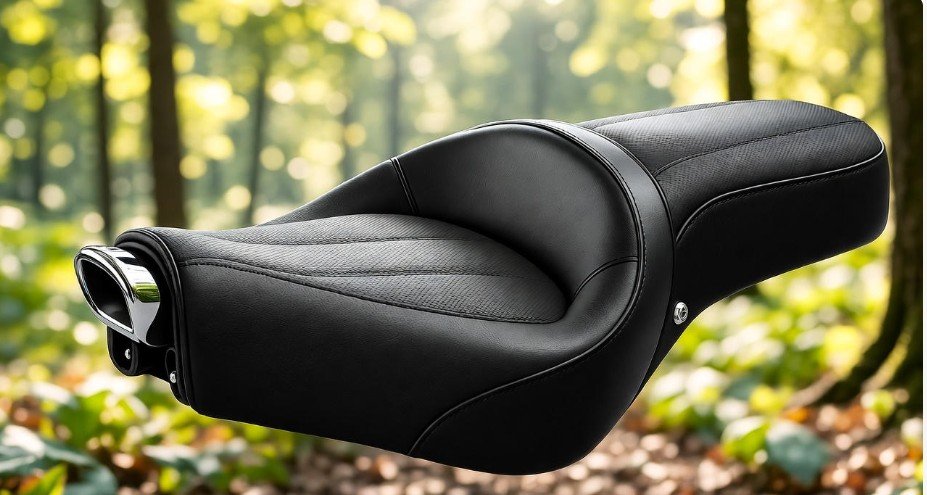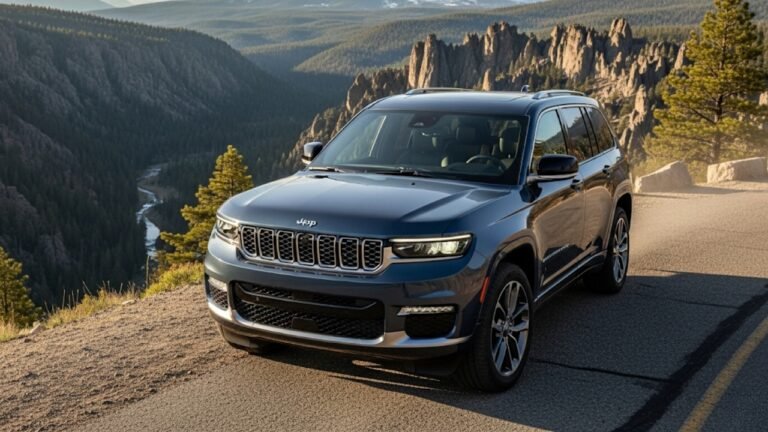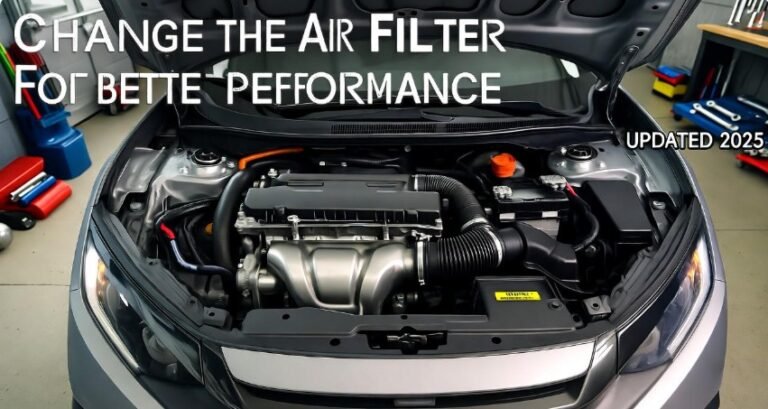Harley Davidson Seat Compatibility Chart: Ultimate Guide

When it comes to Harley Davidson, one thing every rider knows is that comfort and style go hand in hand. Your bike might roar with the perfect sound, but if your seat doesn’t fit right, even the shortest ride can feel like a punishment. That’s where the Harley Davidson Seat Compatibility Chart comes in — it’s your map to finding a seat that fits your model perfectly while keeping you comfortable on every mile.
Many riders overlook how critical the right seat is until their back starts aching halfway through a ride. I’ve been there myself — excited to take my Harley on a weekend trip, only to realize the seat wasn’t built for long-distance comfort. With the help of the seat compatibility chart, I finally found one that fit like a glove. The difference was night and day — smoother rides, less fatigue, and a better connection with the bike. Let’s dive deeper into how this chart helps you choose the perfect seat and why it’s an essential part of every Harley owner’s toolkit.
Why Seat Compatibility Matters for Harley Riders
Choosing the right seat for your Harley is not just about aesthetics; it’s about performance and well-being. A poorly fitted seat can throw off your posture, cause discomfort, and even affect how you handle your bike. Think of it like wearing shoes that are a size too small — sure, they look fine, but after a few hours, the pain overshadows everything else.
The Harley Davidson Seat Compatibility Chart ensures that you’re getting a seat that aligns with your bike’s structure and your riding needs. Every Harley model — from the Sportster to the Softail — has its own frame design, mounting points, and ergonomics. The wrong seat won’t just look awkward; it might not even attach properly.
Here’s what you gain when you match your seat correctly:
-
Enhanced comfort on both short and long rides
-
Better posture, reducing fatigue and back strain
-
Improved control over your bike during turns or long stretches
-
Stylish appearance that complements your Harley’s design
In short, the right seat can make the difference between a good ride and a great one.
A Look Back: The Evolution of Harley Davidson Seats
Harley Davidson’s seat designs have evolved hand-in-hand with the brand’s growth. In the early 1900s, Harley seats were simple — just leather stretched over a steel pan, designed purely for function. Long rides were rough, and cushioning was minimal. Riders often used extra padding or small pillows for added comfort.
By the mid-20th century, as Harleys became synonymous with freedom and long-distance cruising, seat designs became more sophisticated. The introduction of sprung solo seats brought comfort to single riders, while two-up seats allowed companions to join the adventure.
In modern models, Harley has pushed innovation even further. Today’s seats feature ergonomic shaping, gel padding, and weather-resistant materials that adapt to your body and the elements. The brand continues to prioritize comfort without compromising the classic Harley style. Whether you ride a Touring, Dyna, or Sportster, there’s a design tailored to your bike’s spirit.
Understanding the Harley Davidson Seat Compatibility Chart
So, what exactly does the Harley Davidson Seat Compatibility Chart do? In simple terms, it’s your go-to reference for matching seat types to specific Harley models. Every bike in the Harley family — Touring, Softail, Sportster, and Dyna — has unique seat requirements based on frame structure and mounting points.
Below is a simplified overview of seat compatibility:
| Harley Model | Compatible Seat Types |
|---|---|
| Sportster | Solo Seat, Two-Up Seat, Touring Seat |
| Dyna | Solo Seat, Two-Up Seat |
| Softail | Solo Seat, Touring Seat |
| Touring | Touring Seat, Two-Up Seat |
This chart helps riders eliminate the guesswork. Instead of buying a seat that “might” fit, you know exactly what works for your bike. For example, if you own a Softail, you’ll likely want a touring seat for long-distance comfort or a low-profile seat for that sleek look.
Remember — while the chart simplifies the process, always check specific fitment details before purchasing. Some aftermarket seats may require additional mounting hardware or brackets.
Touring Models: Built for the Long Haul
If your Harley is a Touring model, comfort should be your top priority. Touring bikes like the Electra Glide, Road King, and Street Glide are built for long-distance adventures, meaning the seat must provide ample support for hours on the road.
Touring riders often prefer wide, cushioned seats with extra padding and lumbar support. The Electra Glide, for example, fits a wide range of touring seats designed for multi-day comfort. On the other hand, the Street Glide often looks and feels best with low-profile seats that combine style and ergonomics.
Here’s a quick look at popular Touring models and their compatible seats:
| Model | Best Seat Options |
|---|---|
| Electra Glide | All Electra Glide seats |
| Road King | Most Touring seats |
| Street Glide | Low-profile Touring seats |
A well-chosen Touring seat can turn those 500-mile rides into pure joy — no stiffness, no sore back, just the open road ahead.
Sportster Models: Compact Yet Versatile
The Sportster series is loved for its agility and nimble performance. But because these bikes are smaller, the seat design becomes even more important. A mismatched seat can easily throw off balance or cause discomfort due to limited space.
For riders of the Iron 883, Forty-Eight, or Roadster, seat compatibility is everything. The Iron 883 pairs beautifully with solo seats that enhance its minimalist, vintage style. The Forty-Eight often requires specific mounting hardware, while the Roadster looks fantastic with a café racer seat for that sporty, aggressive look.
| Model | Compatible Seats |
|---|---|
| Iron 883 | Solo Seats |
| Forty-Eight | Seats with specific hardware |
| Roadster | Café Racer Seats |
These bikes are all about personality. Choosing the right seat not only ensures comfort but also expresses your unique style.
Dyna Models: The Perfect Blend of Power and Comfort
The Dyna series sits between the lightweight Sportsters and the heavyweight Touring bikes. They offer power and performance without losing comfort. For this reason, Dyna models have some of the most versatile seat options.
The Street Bob works well with solo seats — giving it that stripped-down, old-school biker look. The Low Rider pairs best with two-up seats, ideal for bringing a passenger along. Meanwhile, the Fat Bob benefits from wider seats that balance its muscular stance and provide great comfort.
| Model | Seat Compatibility |
|---|---|
| Street Bob | Solo Seats |
| Low Rider | Two-Up Seats |
| Fat Bob | Wide Seats |
With the right seat choice, your Dyna can become the ultimate all-rounder — perfect for both weekend cruising and long tours.
Softail Models: Smooth, Stylish, and Customizable
Softail models are known for their classic design and hidden rear suspension, providing a smooth ride that feels like floating on air. Seat compatibility plays a huge role here since the wrong fit can interfere with the suspension’s natural feel.
The Heritage Classic pairs beautifully with wide touring seats, designed for maximum comfort. The Fat Boy, on the other hand, looks stunning with low-profile seats that enhance its muscular look. The Breakout needs specific mounting points due to its stretched frame and unique seat pan.
| Model | Best Seat Options |
|---|---|
| Heritage Classic | Wide Touring Seats |
| Fat Boy | Low-Profile Seats |
| Breakout | Seats with Specific Mounts |
Softail owners often experiment with custom seats to match their aesthetic — from vintage leather to sleek, modern finishes.
Key Factors That Affect Seat Compatibility
Choosing a Harley seat isn’t as simple as picking what looks good. It’s about fit, comfort, and function. Here are three main factors that define seat compatibility for Harley Davidson models:
-
Mounting Points:
Each Harley has its own seat mounting configuration. Some seats attach with a single bolt, while others need two or three. Always check how your seat mounts before buying.Model Mounting Points Sportster 2 Bolts Softail 1 Bolt Touring 3 Bolts -
Rider Position and Comfort:
Your riding position matters more than you think. A seat that positions you too far back or forward can cause strain. Touring riders need extra padding, while city riders often prefer firm, sleek seats for better control. -
Passenger Needs:
If you ride with a passenger, consider a two-up seat or add-on passenger pad. Ensure the seat provides enough cushioning and space for both riders.
These simple details can transform your ride — both in comfort and performance.
Custom vs. Stock Seats: Which Should You Choose?
One of the most common questions Harley owners face is whether to stick with stock seats or invest in custom seats. Both have their merits, and your decision should depend on how and where you ride.
Custom Seats:
-
Offer a personalized fit tailored to your body type.
-
Come in unique designs and materials that reflect your taste.
-
Provide higher-quality construction, often lasting longer than stock seats.
| Benefits of Custom Seats | Details |
|---|---|
| Personalized Fit | Adjusted for rider’s size and comfort |
| Unique Designs | Add individuality to your Harley |
| Durable Materials | Better longevity and support |
Stock Seats:
-
Are designed for universal comfort and easy fitment.
-
Maintain the original Harley look.
-
Are budget-friendly and easy to replace.
If you enjoy tweaking your Harley’s appearance and performance, a custom seat is the way to go. But if you value simplicity and authenticity, a stock seat will keep your bike classic and hassle-free.
Materials and Durability: Leather vs. Synthetic
When choosing a Harley Davidson seat, the material matters as much as the shape. The seat is the point of contact between you and your bike, so it needs to be comfortable, durable, and weather-resistant. Harley seats generally come in leather or synthetic materials, each with its own advantages.
Leather seats offer a classic, premium look. Over time, leather molds to your body, creating a personalized fit. It’s soft yet supportive, making long rides more enjoyable. However, leather requires maintenance — conditioning, cleaning, and protection from rain or sun are necessary to prevent cracking and fading. For those who ride year-round, leather can feel luxurious but demands attention.
Synthetic seats, usually made from vinyl or high-grade polymers, are easier to maintain. They resist rain, UV rays, and stains, making them ideal for riders who park outside or encounter all-weather conditions. While not as soft as leather, modern synthetic materials can be surprisingly comfortable, and they often come at a more affordable price point.
| Material | Comfort | Maintenance | Durability | Cost |
|---|---|---|---|---|
| Leather | High | High | High | High |
| Synthetic | Moderate | Low | Moderate | Low |
Choosing between leather and synthetic largely depends on your lifestyle and riding habits. If you value luxury and long-term comfort, leather is a great option. If you need a resilient, low-maintenance solution, synthetic works perfectly.
Ergonomics and Design: How Shape Impacts Your Ride
A seat’s shape and ergonomics play a major role in how comfortable and safe your rides are. Harley Davidson seats come in various contours — wide, cushioned designs for touring or narrow, firm styles for sportier rides. Each shape affects your posture, grip, and even control over the bike.
Wide and cushioned seats support your lower back and distribute weight evenly, perfect for riders who love long-distance touring. Narrow, firm seats are better for short, aggressive rides or city commuting, offering more direct contact and improved control. When choosing, think about your typical rides and how the seat will support your body over time.
Another design element is seat height. Too high, and your feet may not reach the ground properly; too low, and you may compromise riding comfort. Adjustable or slightly contoured designs can solve this issue, giving you a perfect balance of style and ergonomics.
Installation Tips: DIY or Professional?
Installing a Harley Davidson seat can be a satisfying project if done correctly. Most seats are user-friendly, but knowing the right steps ensures safety and comfort. Here’s a simple guide:
DIY Installation Steps:
-
Gather Tools: Screwdriver, wrench, Allen keys, and any specific tools recommended by the seat manufacturer.
-
Remove Old Seat: Unscrew bolts carefully, lift the old seat, and keep all hardware for reference.
-
Prepare New Seat: Inspect the new seat, align it with the mounting points, and check for any necessary hardware.
-
Install New Seat: Position the seat, secure bolts, and double-check tightness. Use thread locker if needed to prevent loosening.
While DIY installation is possible, there are times to call a professional:
-
Complex seats with multiple mounting adjustments
-
Specialty custom seats requiring unique tools
-
If you’re inexperienced with bike maintenance
Proper installation ensures your seat remains secure, enhancing both comfort and safety on the road.
Maintenance and Long-Term Care
Even the best Harley Davidson seat won’t last without proper care. Routine maintenance keeps it comfortable and looking new for years. Here’s a breakdown:
Routine Cleaning:
-
Wipe off dust and debris regularly with a damp cloth
-
Use mild soap and water; avoid harsh chemicals
-
Rinse thoroughly and dry with a soft cloth
-
For leather seats, apply a conditioner every few months
Long-Term Care:
-
Use a seat cover to protect against sun, rain, and dust
-
Store your bike in a garage or under a protective cover
-
Inspect for tears or wear and repair immediately
-
Apply UV protectant for leather or protective spray for vinyl
A little care goes a long way — your seat will remain supportive and stylish, making every ride a pleasure.
Decoding the Harley Davidson Seat Compatibility Chart
The Harley Davidson Seat Compatibility Chart might look intimidating at first, but it’s easy once you understand the basics. Each row lists a seat model, while columns represent different Harley models. A checkmark indicates compatibility, while a cross shows incompatibility.
Understanding model codes:
-
FLH – Touring models
-
FX – Dyna models
-
XL – Sportster models
-
VRSC – V-Rod models
To use the chart:
-
Find your bike’s model code at the top of the chart
-
Scan down the column to see which seats are compatible
-
Cross-reference with your riding style, seat material preference, and passenger needs
With this approach, you can confidently choose a seat that fits both your Harley and your lifestyle.
Rider Case Studies: Real Experiences
Long-Distance Touring:
John, a Road King owner, upgraded to a Mustang Touring seat. On his 500-mile weekend trips, he noticed less back pain, more stability, and overall better comfort.
Daily Commuting:
Lisa rides her Sportster daily for city commuting. The Saddlemen Explorer seat made her 20-mile trips much smoother, and installation was straightforward.
Off-Road Adventures:
Mark enjoys rugged trails on his Harley. The Corbin Dual Sport seat gave him durability, better grip, and support on uneven terrain.
These real-world examples highlight how seat choice directly impacts the riding experience, reinforcing the importance of consulting the seat compatibility chart.
Upgrades and Accessories for Harley Seats
Enhancing your seat with comfort and security upgrades can elevate your riding experience.
Comfort Add-ons:
-
Gel pads for extra cushioning
-
Foam inserts for firm, supportive seating
-
Sheepskin covers for seasonal temperature control
-
Adjustable backrests for lower back support
Security Features:
-
Quick-release or cable locks to prevent theft
-
Alarmed locks for added security
-
Waterproof seat covers to protect from weather damage
These upgrades ensure your Harley remains comfortable, safe, and stylish regardless of your riding style or environmental conditions.
Legal and Safety Considerations
Modifying your seat has implications beyond comfort. Always consider regulations, insurance, and warranty:
-
Regulatory Compliance: Ensure your seat meets local and federal standards. Some regions have rules on seat height and modifications.
-
Insurance Impact: Notify your provider; seat modifications may affect premiums.
-
Warranty Considerations: Certain changes could void your bike’s warranty. Always keep records of upgrades and compliance.
Staying informed ensures your ride remains legal, safe, and protected.
FAQs About Harley Davidson Seats
1. Can I use a stock seat on any Harley model?
No, stock seats are model-specific. Check the compatibility chart for exact fit.
2. Are custom seats worth the investment?
Yes, especially for long rides or personalized style. They provide tailored comfort and durability.
3. How often should I clean my seat?
Monthly cleaning is ideal, with leather conditioning every few months.
4. Can I ride comfortably with a narrow, low-profile seat?
Yes, but it’s better suited for short rides or city commuting rather than long tours.
5. Are synthetic seats durable in extreme weather?
Yes, they resist rain, UV rays, and temperature changes with minimal maintenance.
6. Do all Harley seats come with passenger options?
No, some solo seats require separate passenger pads or backrests.
7. Will seat modifications affect my insurance?
Yes, notify your insurer to avoid denied claims in case of accidents.
8. Can I install a Harley seat myself?
Yes, for most models, but complex or custom seats may require professional installation.
Conclusion: Choosing the Perfect Harley Seat
The Harley Davidson Seat Compatibility Chart is more than a reference — it’s a roadmap to comfort, style, and performance. By understanding your bike, riding style, and seat materials, you can make an informed choice that enhances every ride.
Invest in a seat that supports your body, fits your Harley perfectly, and complements your style. With proper care, installation, and maintenance, your Harley seat will provide years of reliable service.
Whether it’s a Touring adventure, a Sportster commute, or a Softail weekend ride, the right seat transforms your experience. Use the compatibility chart, consider materials and ergonomics, and explore upgrades to ensure every mile is smooth, safe, and enjoyable.
Riding your Harley is about freedom, thrill, and connection to the road — a properly fitted seat ensures nothing gets in the way of that experience. Embrace the journey with comfort and confidence, and let your Harley roar with the perfect seat beneath you.





